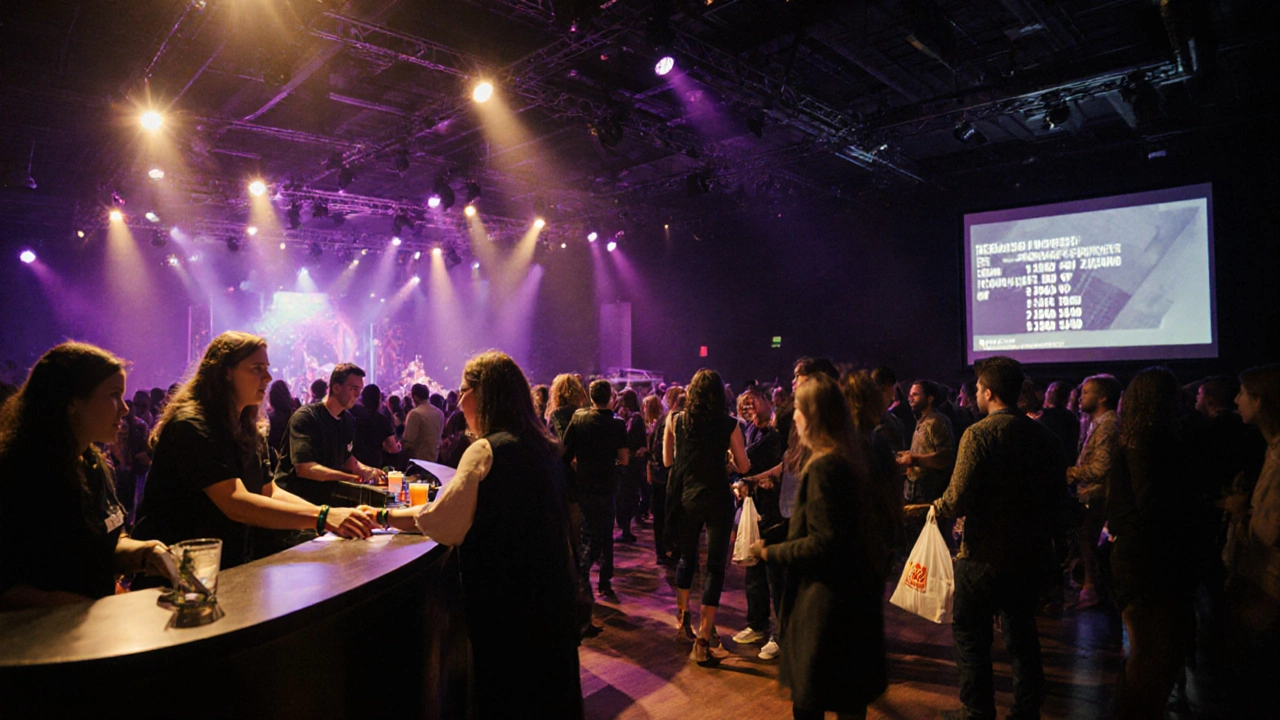How to Host a Profitable Fundraising Event - Step‑by‑Step Guide
 Oct, 13 2025
Oct, 13 2025
Fundraising Event Profit Calculator
Calculate Your Event Profit Potential
Use this tool to estimate your event's profitability by entering realistic values for costs and revenue streams. This will help you plan your fundraising event with confidence.
Results
Total Revenue:
Total Expenses:
Contingency:
Expected Profit:
Ever wondered if you can throw a fun gathering and still walk away with a tidy profit? The answer is yes - you just need to treat the fundraising event like a small business and plan every detail with cash flow in mind. Below is a hands‑on roadmap that takes you from idea to after‑party, with real‑world numbers you can plug into your own budget.
1. Pin Down the Purpose and Financial Goal
Before you book a band or design a flyer, write a clear mission statement. Ask yourself: what cause am I supporting, and how much money do I need to raise? A specific target (e.g., "Raise £5,000 for the local youth sports program") gives you a concrete figure to base every decision on.
2. Build a Detailed Budget
Start with a spreadsheet that lists every expense and every potential income source. Use the following template to keep things tidy:
- Venue fee
- Marketing and advertising
- Equipment rentals (sound, lighting)
- Staffing or volunteer costs
- Food, drinks, and merchandise
- Contingency (usually 10% of total costs)
Subtract the estimated total cost from your financial goal to see how much you need to generate in revenue streams.
3. Choose the Right Format and Venue
Different formats lend themselves to different profit potentials. A gala dinner can command high ticket prices, while a community fair might rely on multiple small revenue streams.
Venue is a critical cost factor; it also influences attendance. In Edinburgh, many historic halls offer off‑peak discounts, which can shave 15‑20% off your venue budget.

4. Map Out Revenue Streams
Relying on just ticket sales is risky. Diversify with the following proven sources:
- Ticket sales - set tiered pricing (early bird, regular, VIP) to capture both budget‑conscious guests and big spenders.
- Sponsorship - approach local businesses for cash or in‑kind support in exchange for branding on flyers, stage backdrops, and social media shout‑outs.
- Merchandise - sell event‑branded T‑shirts, mugs, or tote bags. Profit margins can exceed 50% when ordered in bulk.
- Food and beverage sales - partner with a local caterer who agrees to share a percentage of sales.
- Donations - set up a live donation ticker and QR codes that link to a secure online platform.
Each stream adds a layer of security; if ticket sales fall short, sponsorships or merch can fill the gap.
5. Craft a Marketing Plan That Converts
Effective promotion turns interest into paid tickets. Follow this three‑phase approach:
- Teaser phase (3weeks out): share a compelling story about the cause on Facebook and Instagram, using eye‑catching graphics.
- Launch phase (2weeks out): open ticket sales with a limited‑time discount code. Use email newsletters to reach your existing donor list.
- Final push (last 5days): post behind‑the‑scenes videos, highlight sponsors, and remind followers of the donation QR code.
Track clicks with UTM parameters so you can see which channel drives the most revenue.
6. Recruit and Manage Volunteers
Volunteers are your cost‑saving heroes. Set up a simple sign‑up form on Google Forms and clearly outline roles (ticket gate, merch booth, social media live‑stream). Provide a short training session the day before the event - it reduces mistakes and improves the guest experience.
7. Execute the Day‑of Operations
On the big day, follow a run‑sheet that includes:
- Venue access and equipment check (sound, lighting).
- Volunteer brief at 9am.
- Opening remarks and cause story at 10am.
- Mid‑event sponsor shout‑outs and merchandise push.
- Final donation call‑to‑action before closing.
Keep a live calculator on a laptop to update the donation ticker; donors love seeing the total climb in real time.

8. Post‑Event Follow‑Up and Reporting
After the curtains fall, send thank‑you emails within 48hours. Include a brief impact report - e.g., "Your £5,000 donation will fund 30 new sports kits for local kids". Publish the final financial summary on your website; transparency builds trust for future events.
Revenue‑Stream Comparison Table
| Revenue Stream | Avg. % of Total Income | Setup Effort (Low/Med/High) | Risk Level (Low/Med/High) |
|---|---|---|---|
| Ticket sales | 40% | Medium | Medium |
| Sponsorship | 25% | High | Low |
| Merchandise | 15% | Low | Low |
| Food & beverage sales | 10% | Medium | Medium |
| Donations | 10% | Low | Low |
Quick Checklist Before You Launch
- Define cause, audience, and specific fundraising target.
- Draft a complete budget - include a 10% contingency.
- Secure a venue with favorable terms for non‑profits.
- Line up at least two sponsors and a merch supplier.
- Create tiered ticket pricing and a simple online purchase page.
- Plan a 3‑phase marketing calendar with UTM tracking.
- Recruit 5‑10 volunteers and provide a one‑hour training session.
- Print QR codes for donations and place them at visible spots.
- Prepare a run‑sheet for the event day and assign a point person for each task.
- Send post‑event thank‑you notes and publish a transparent impact report.
Frequently Asked Questions
What is the best ticket price for a community fundraiser?
Start with an "early bird" price that is 20% lower than the regular rate to encourage early commitments. For most small‑scale events, a £15 early bird, £20 regular, and £30 VIP tier works well. Test the price with a quick poll among your mailing list before finalising.
How many sponsors should I aim for?
Aim for at least two medium‑level sponsors and one headline sponsor. This mix reduces risk - if one sponsor backs out, you still have funding to cover core costs.
Can I run a profitable event without charging admission?
Yes, but you’ll need to rely heavily on sponsorship, high‑margin merch, and generous donations. Free‑entry events often attract larger crowds, which can be leveraged to sell more food, drinks, and raffle items.
What legal considerations should I keep in mind?
Register the event with the local council, obtain any required licences (e.g., alcohol, live music), and ensure your charity number is displayed on all promotional material. Keep clear records for HMRC compliance.
How do I track the event’s financial performance in real time?
Use a simple spreadsheet or a cloud‑based budgeting tool that updates automatically when ticket sales, sponsor pledges, or donations are entered. Display the live total on a screen at the venue to motivate guests to give more.
